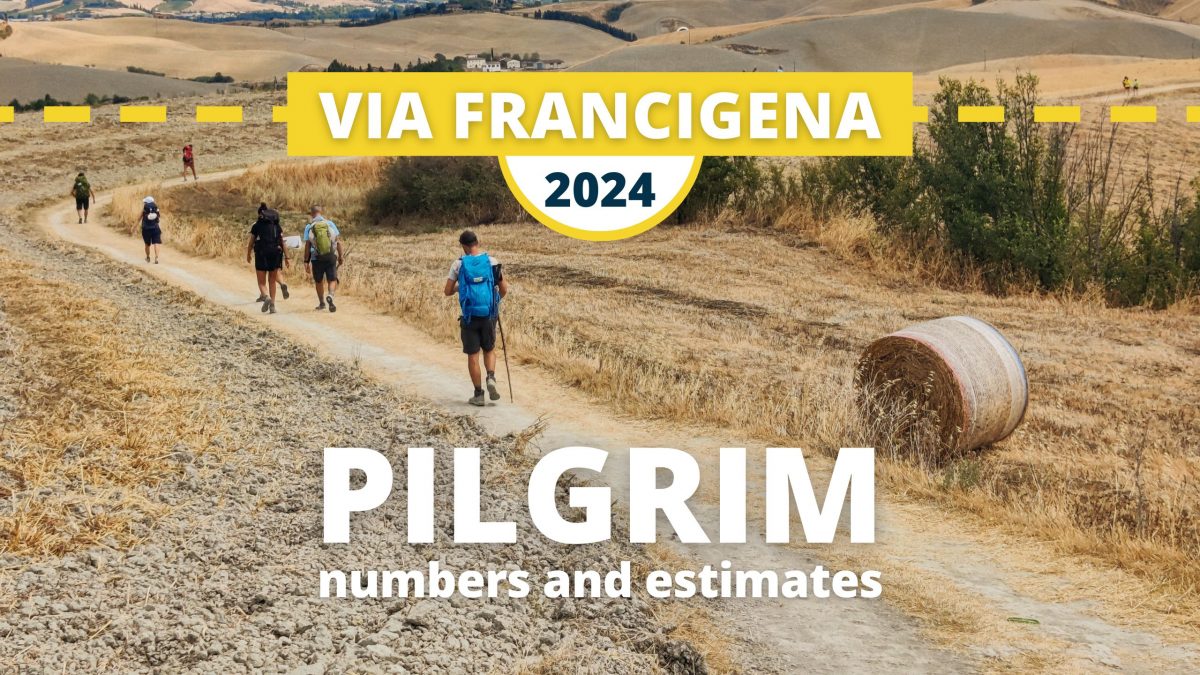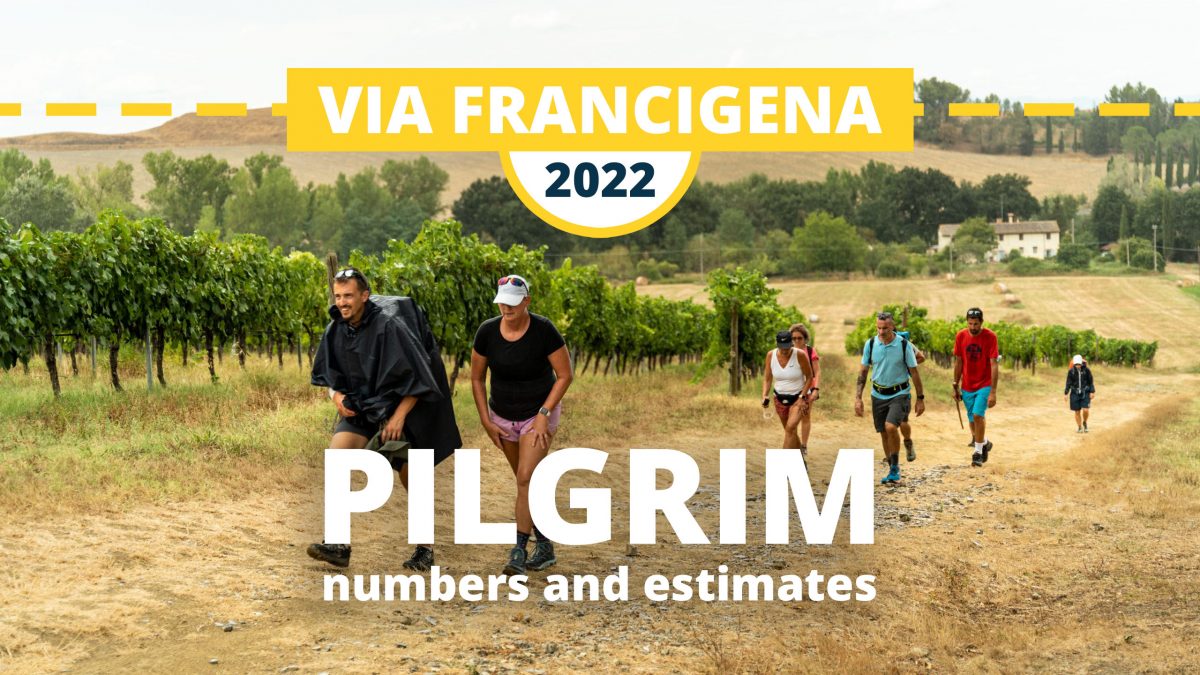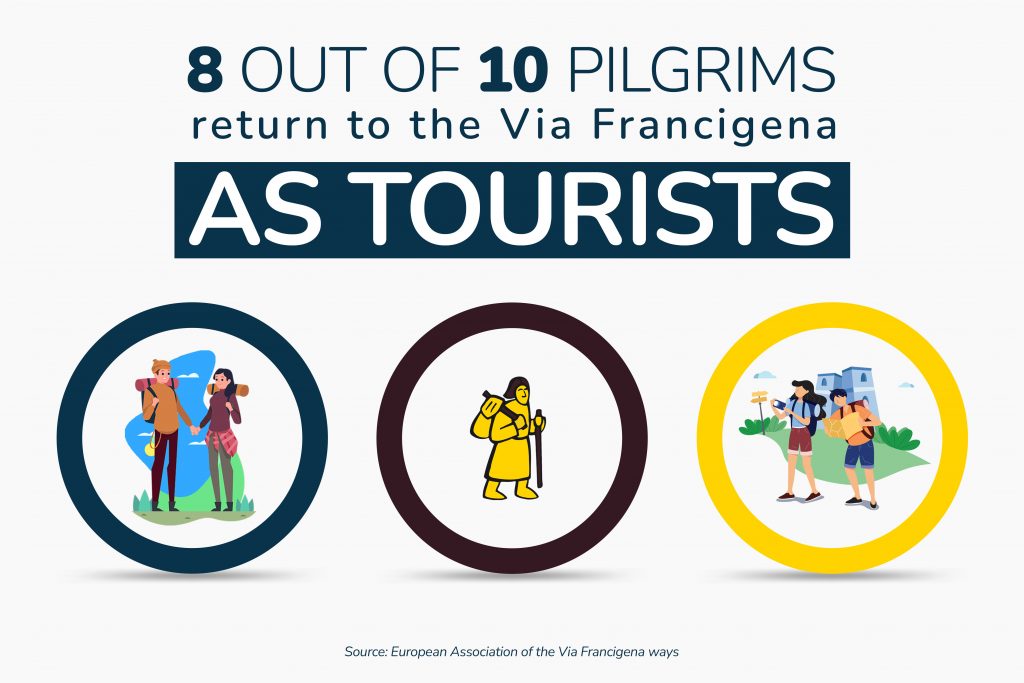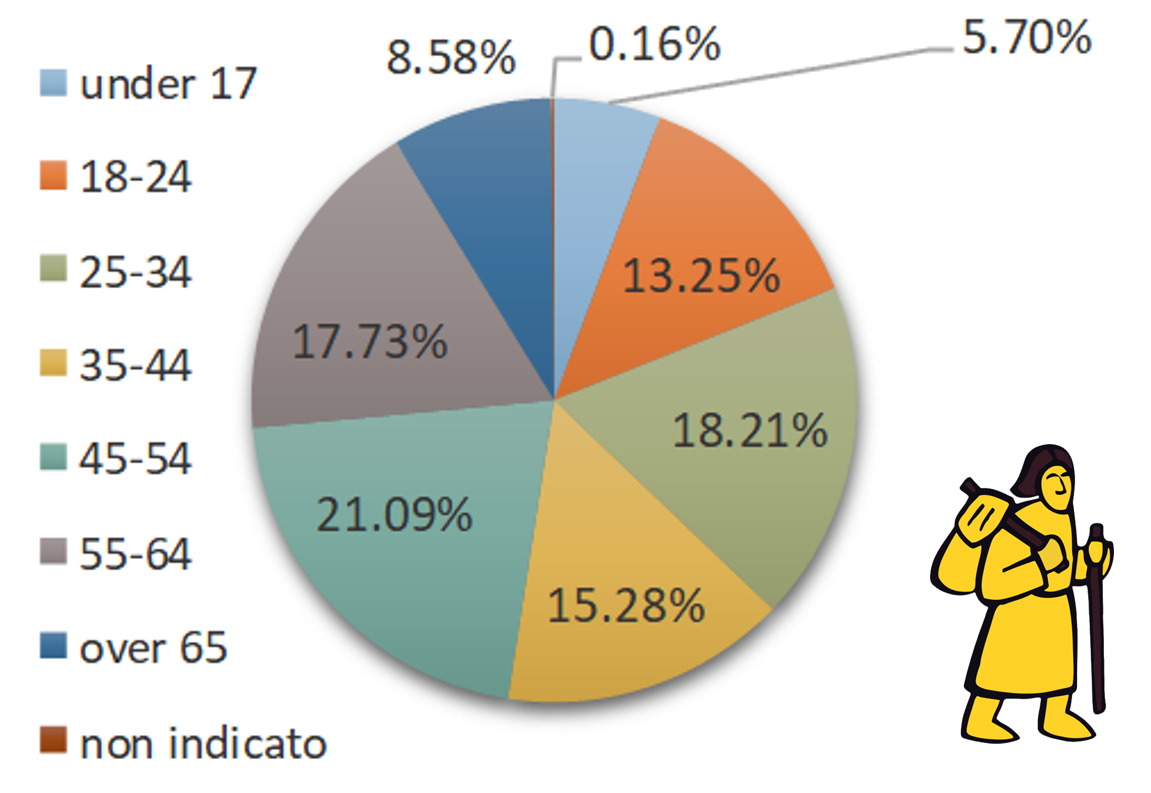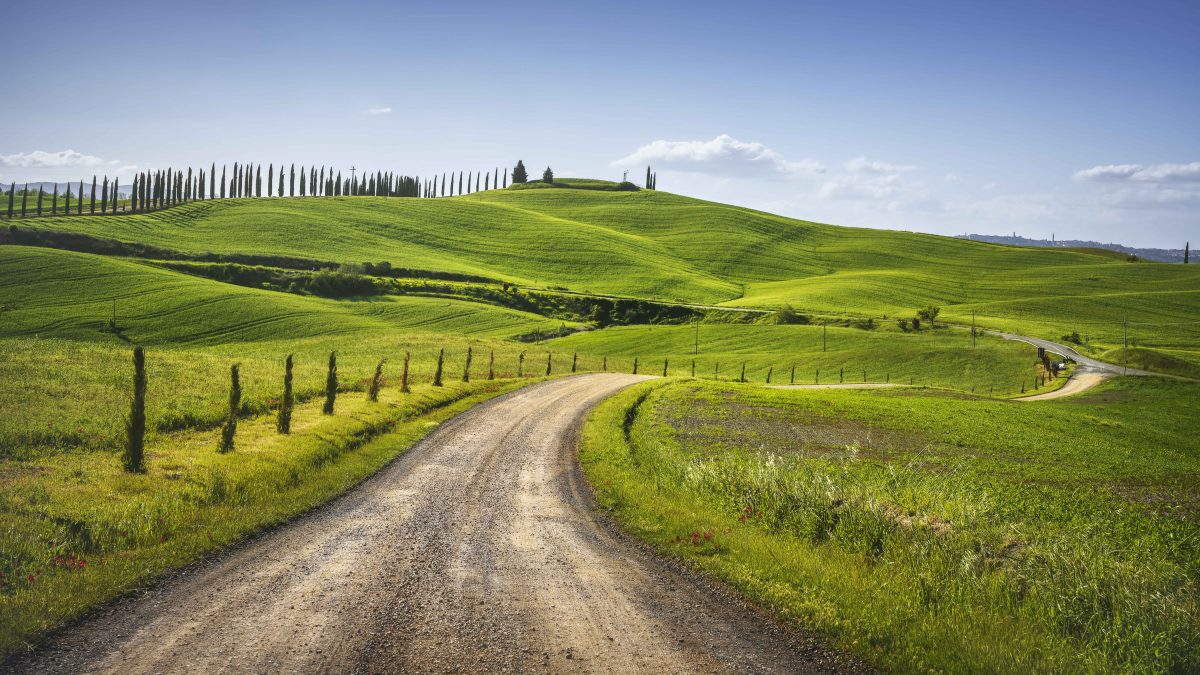The walking season is upon us and, as every year, we take a look at the numbers of the Via Francigena in 2024 and the estimated flow of pilgrims, recorded by the European Association of the Via Francigena ways (EAVF) through the distribution of EAVF credentials.
The year 2024 has confirmed a significant international presence along the route, which continues to establish itself as an increasingly sought-after destination and experience. It attracts a growing number of young people and is becoming more popular among international travellers, including those from non-European continents. Contributing to this trend are the new English-language guides published by the London-based publishing house Cicerone, which has recently released the fourth volume covering the southern section of the Via Francigena. This completes the collection of three existing volumes: Canterbury-Lausanne, Lausanne-Lucca, and Lucca-Rome.
CREDENTIALS IN 2024: THE NUMBERS
Once again, EAVF has analysed data collected from the distribution of credentials by the association. A total of 3,885 pilgrims completed the questionnaire upon receiving their credentials.
These figures should be considered as indicative estimates rather than absolute numbers. Several factors must be taken into account:
- There is currently no official observatory monitoring the flow of walkers along the Via Francigena.
- Statistically, 30% of pilgrims use the same credential multiple times, particularly those who walk sections of 7-10 days with the same credential over multiple years.
- 20% of walkers do not use a credential.
- Other credentials, in addition to EAVF’s, are also in circulation.
In 2024, the number of AEVF credentials distributed was 14,595, and there were 125 distribution points for the pilgrim passport.

TRAVELLER PROFILE
MODE OF TRAVEL
There has been a slight increase in the number of pilgrims choosing to travel on foot, confirming their overwhelming majority among respondents (87% compared to 86% in 2023). Conversely, the number of cycling pilgrims has slightly decreased (13% compared to 14% in 2023). Notably, seven pilgrims travelled parts of the route on horseback, an increase from just one case recorded in 2023.
AGE
The age distribution of those walking the Via Francigena confirms last year’s trend, which saw an increase in young pilgrims. In 2024, the under-25 age group (20.7%) and the 55-64 age group (20.8%) were almost tied for the highest percentage. Just below them were the 45-54 (17%) and 25-34 (16.7%) age groups. The over-65 category accounted for 14%, followed by the 35-44 age group (10%).
GENDER
Regarding gender, the figures remain consistent with those of 2023, showing a slight predominance of male participants (51.4%) over female participants (48.8%), although the number of women has been increasing in recent years.
NATIONALITY
In line with 2023, the largest group of walkers remains Italian, with their share rising by nearly three percentage points (70.7% compared to 68% last year). They are followed by France, the USA, and new entries in the top five: the UK and the Netherlands. Just below them are Germany, Belgium, and Australia.
Interest in the Via Francigena outside Europe spans from Mexico to Japan, Korea to New Zealand, and includes Argentina and Venezuela. The analysis of completed questionnaires recorded visitors from over 50 countries, confirming the increasingly international appeal of the route.
DEPARTURE MONTH
April remains the most popular departure month (26%). This trend, established in 2023, contrasts sharply with the 2022 figures, where the three summer months—August, July, and June—were the most preferred for starting the journey.
Continuing the trend against 2022, departures are increasingly spread throughout the year: August follows with 13.6%, May with 12.3%, June with 8.2%, and then September, July, and October.
STARTING AND ENDING LOCATIONS
In 2024, the top three departure locations were all in Tuscany: Lucca (19.2%), Siena (7.4%), and San Miniato (6.2%). Lucca, which held first place in 2022 and 2023, continues to be a preferred starting point for those setting off on the Via Francigena with the goal of reaching Siena or Rome. Other popular Tuscan locations include Altopascio, Gambassi Terme, and San Gimignano, followed by Rome, the Great St Bernard Pass in Switzerland, Viterbo, Canterbury in England, and Aosta.
Regarding pilgrimage destinations, Rome remains in first place with 40.9%. The arrival in the Eternal City continues to be a key goal for many pilgrims, and with the Jubilee Year approaching in 2025, an even greater influx is expected to St Peter and St Paul’s tombs. Siena follows with 24.9%, along with the Tuscan destinations of Monteriggioni and San Gimignano. Rounding out the top five is Santa Maria di Leuca, the southernmost point of the Via Francigena.
MOTIVATIONS
Sharing remains the driving force behind many journeys along the Via Francigena and is the most frequently cited motivation by respondents (42.7%). The pilgrimage is, above all, an opportunity to share an extraordinary experience, a meal with friends, a chat along the route, or time at a hostel with fellow travellers. Other significant motivations include tourism (33.4%), culture (32.4%), spirituality and personal growth (24.3%), faith (12.5%), and finally, environmental, sporting, and gastronomic reasons.
THE TESTIMONIUM IN ROME
An important update concerns the reception of pilgrims in Rome. From May 2024 and throughout 2025, a new service has been activated to support those arriving in the Eternal City.
The Fabbrica di San Pietro, which has managed the pilgrim reception service in Rome since 2022 with a dedicated desk at St Peter’s Basilica, is carrying out a volunteer project in collaboration with the Via Romea Strata and the Homo Viator – San Teobaldo Foundation. This initiative aims to train volunteers to welcome and assist pilgrims reaching Rome at the end of their journey. Volunteers support the Basilica staff and warmly welcome pilgrims with empathy and hospitality. Click here to find out more about the service.
In 2024, nearly 6,000 pilgrims arriving at St Peter’s have received the Testimonium, compared to 3,319 in 2023. This number is expected to grow further during the 2025 Jubilee Year.
HOW DID PREVIOUS YEARS GO?
Have a look at the data on our ‘Statistics’ page!



